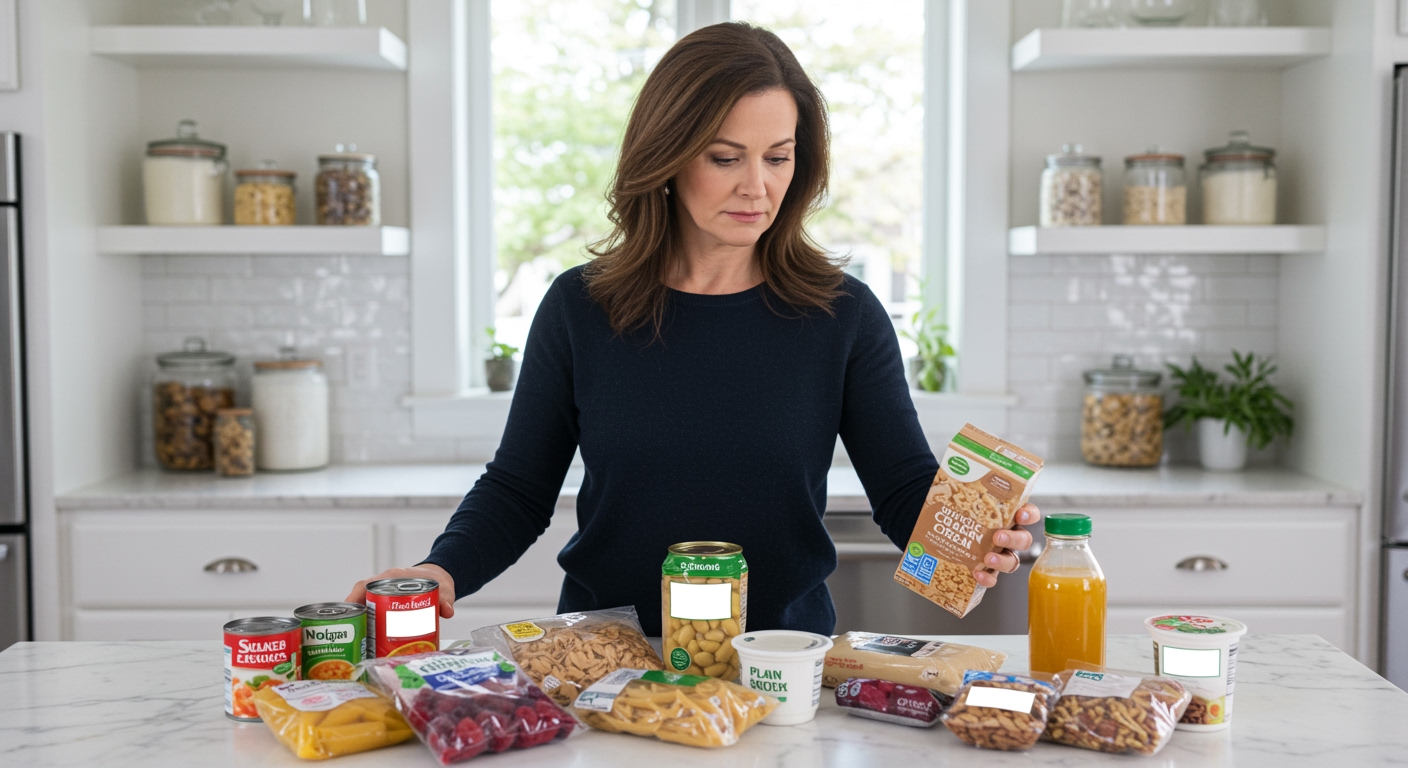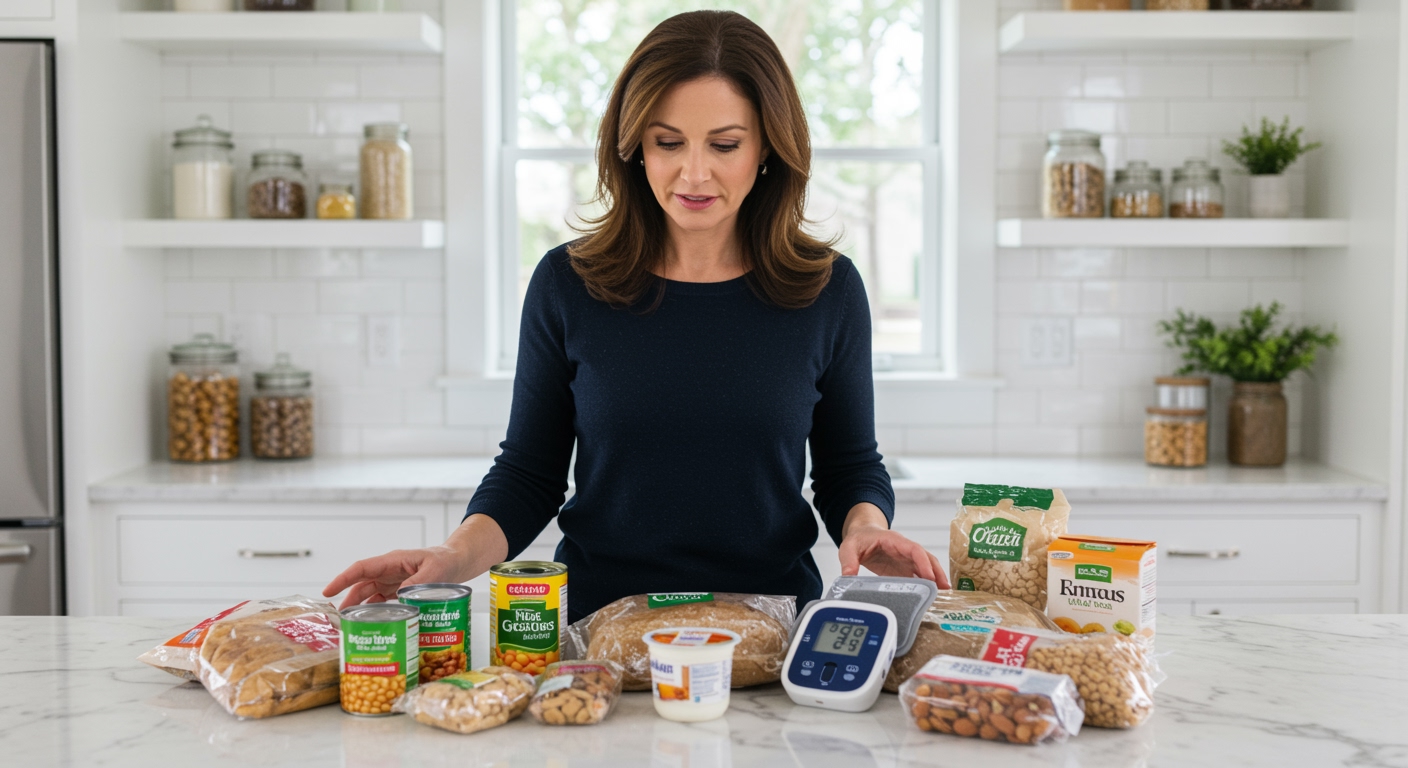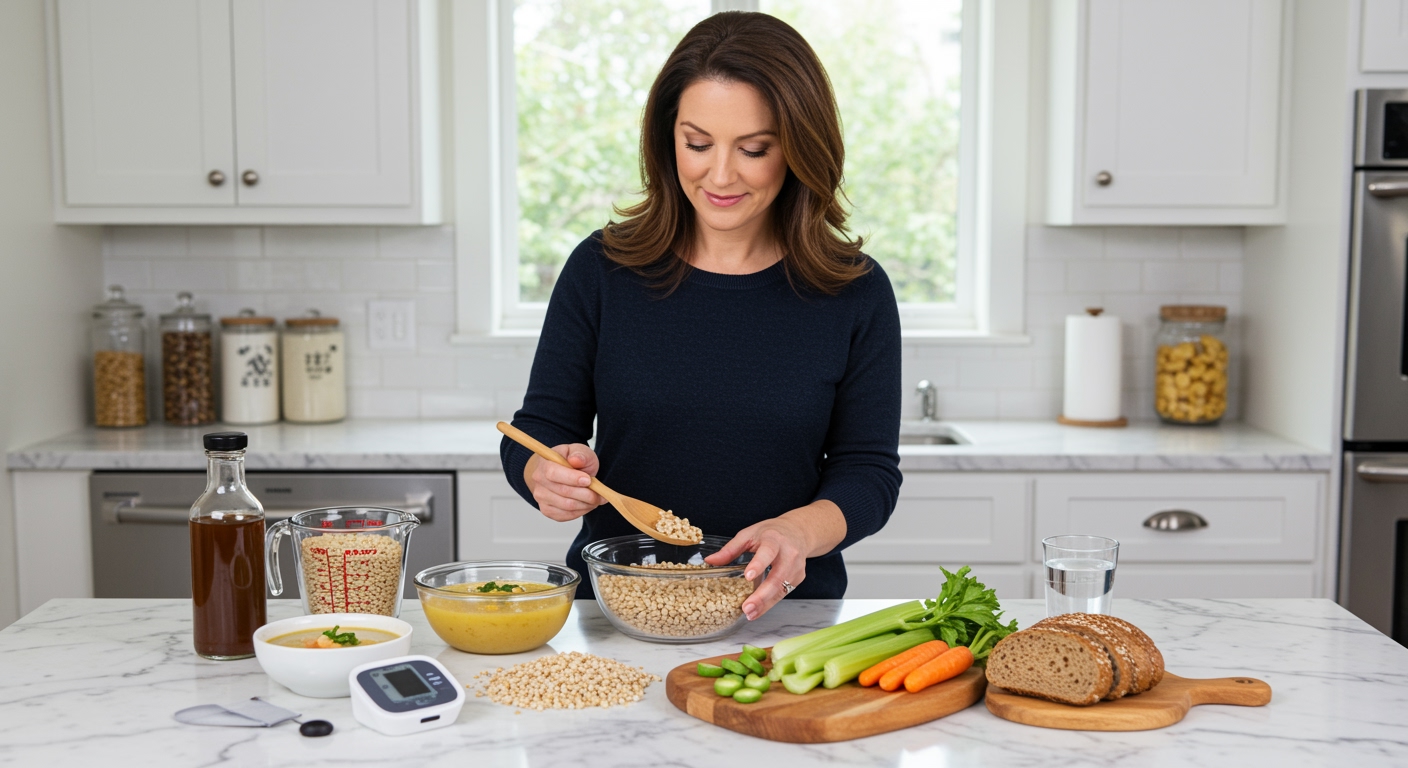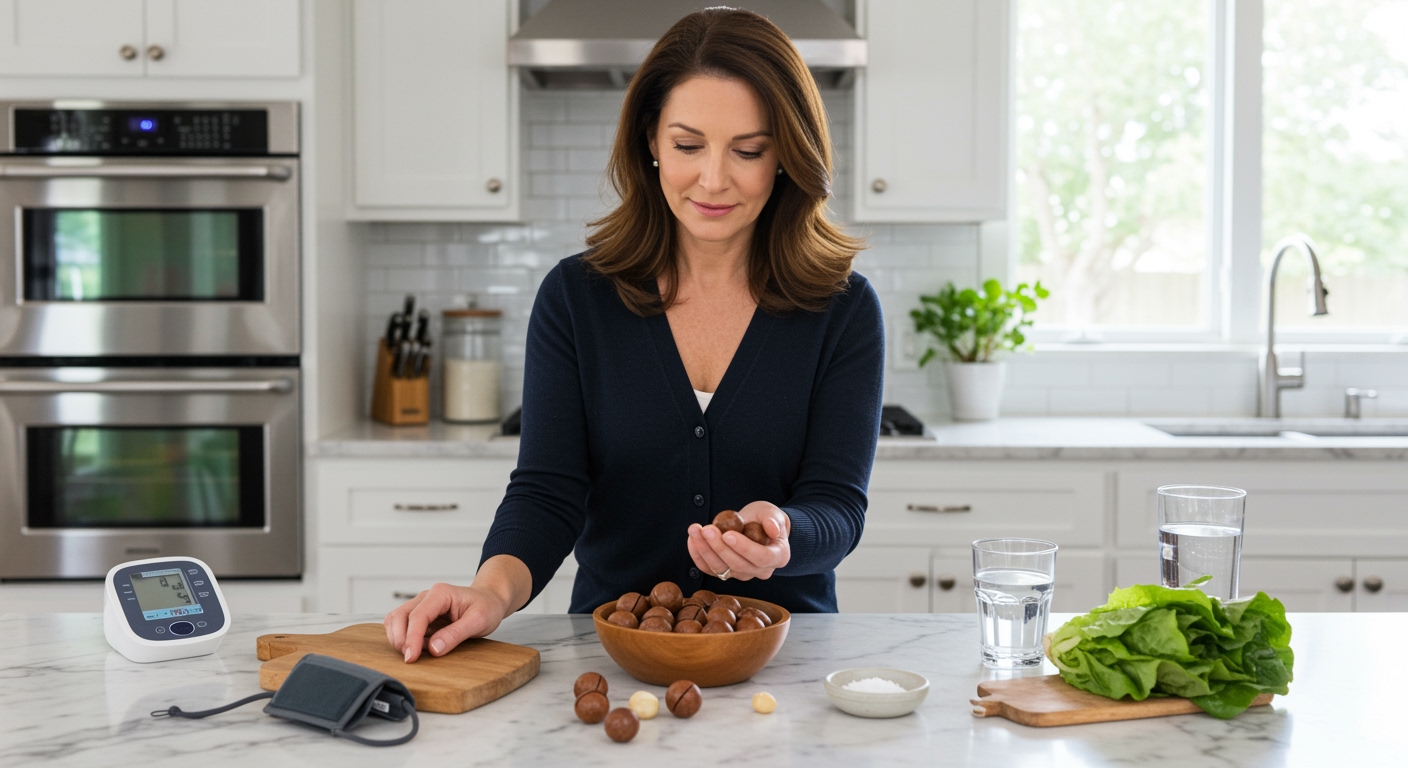✪ Key Takeaway: Hypertensive patients should avoid high-sodium packaged foods but can safely enjoy many low-sodium processed options.
Introduction
Your doctor just told you that your blood pressure is too high and you need to watch your diet.
You might be wondering if this means saying goodbye to all packaged foods forever and spending hours in the kitchen preparing everything from scratch.
Hi, I’m Abdur, your nutrition coach and today I’m going to explain exactly which packaged foods you should avoid with high blood pressure and which ones can actually support your heart health goals.
Why Do Packaged Foods Get Blamed For High Blood Pressure?
The main culprit behind packaged foods and high blood pressure is sodium.
Most processed foods contain excessive amounts of salt to enhance flavor and extend shelf life.
When you consume too much sodium, your body retains more water to dilute the salt concentration in your bloodstream.
This extra fluid increases the volume of blood flowing through your arteries, which creates more pressure against artery walls.
Research shows that reducing sodium intake by just half could prevent millions of deaths from cardiovascular disease over the next decade.
The average American consumes about 3,400 milligrams of sodium daily, which is nearly double the recommended limit of 1,500 milligrams for people with high blood pressure.
However, not all packaged foods are created equal when it comes to sodium content.
✪ Fact: About 70% of dietary sodium comes from packaged and restaurant foods, not the salt shaker.
Which Packaged Foods Should You Actually Avoid?
Certain categories of packaged foods are notorious for their sky-high sodium content.
Canned soups top the list, with some varieties containing over 1,000 milligrams of sodium per serving.
Processed meats like deli turkey, ham, and bacon are also high-sodium offenders that can spike your blood pressure quickly.
Frozen meals and pizza often pack an entire day’s worth of sodium into a single serving.
Condiments and sauces might seem harmless, but soy sauce, ketchup, and salad dressings can add hundreds of milligrams of hidden sodium to your meals.
Snack foods like chips, crackers, and pretzels are designed to make you crave more through their perfect balance of salt, fat, and crunch.
Even seemingly healthy options like vegetable juices and instant oatmeal packets can contain surprising amounts of sodium.
✪ Pro Tip: Always check the nutrition label and aim for foods with less than 140 milligrams of sodium per serving.
Are There Any Heart-Healthy Packaged Foods You Can Enjoy?
The good news is that many packaged foods can actually support your blood pressure management goals.
Frozen fruits and vegetables without added sauces or seasonings retain their nutritional value and contain minimal sodium.
Canned beans and lentils provide heart-healthy fiber and protein, especially when you choose no-salt-added varieties or rinse regular canned beans before eating.
Plain Greek yogurt offers probiotics and potassium, which can help counteract sodium’s effects on blood pressure.
Whole grain cereals and oats provide soluble fiber that helps lower cholesterol and supports overall heart health.
Nuts and seeds in their natural form contain magnesium and healthy fats that benefit cardiovascular function.
Low-sodium broths and stocks can add flavor to your cooking without the blood pressure spike.
✪ Note: Look for packages labeled “no salt added,” “low sodium,” or “reduced sodium” to make better choices.
How Can You Make Packaged Foods Work With Your Blood Pressure Goals?
Smart shopping and preparation strategies can help you enjoy packaged foods while managing your blood pressure.
Start by reading nutrition labels carefully and comparing sodium content between different brands of the same product.
Rinse canned vegetables, beans, and tuna under cold water to remove up to 40% of the added sodium.
Mix high-sodium packaged foods with fresh ingredients to dilute the overall sodium content of your meal.
Use herbs, spices, lemon juice, and vinegar to add flavor without relying on salt-heavy seasonings.
Plan your daily sodium intake by tracking how much you consume from all sources, not just packaged foods.
Consider making your own versions of favorite packaged foods when possible, like homemade soup or trail mix with controlled ingredients.
✪ Pro Tip: Keep a food diary for one week to identify your biggest sources of hidden sodium.
The Bottom Line
You do not need to avoid all packaged foods if you have high blood pressure, but you do need to be selective about which ones you choose.
Smart food choices are about reading labels, not avoiding entire food categories, and this approach will serve your health better in the long run.
I would love to hear about your experiences with managing blood pressure through diet changes, so please share your questions or success stories in the comments below.
References
At NutritionCrown, we use quality and credible sources to ensure our content is accurate and trustworthy. Below are the sources referenced in creating this article:
- American Heart Association: What if sodium in packaged foods was reduced for an entire continent
- National Center for Biotechnology Information: Sodium Intake and Hypertension
- American Medical Association: Cut sodium in foods by half by 2034 and save lives
- UC Davis Health: Your guide to low-sodium eating and how to lower blood pressure





